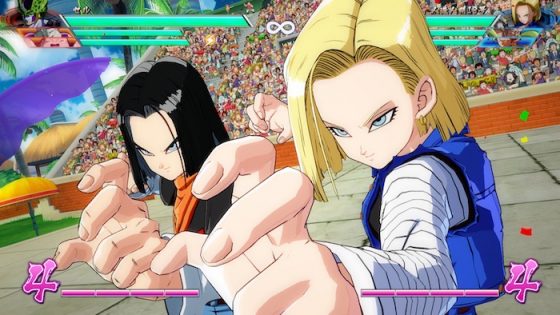
`
- System: PS4, Xbox One, PC (Windows), Steam
- Publisher: Bandai Namco Entertainment
- Developer: Arc System Works
- Release Date: International: 1/26/2018, Japan: 2/1/2018
Dragon Ball FighterZ - Launch Trailer | PS4, X1, PC
Functionally, the game has 6 buttons: Light, Medium, Heavy, Ki Blast, Assist 1, and Assist 2. By hitting specific buttons together (or mapping a macro), you can also access different techniques: dragon rush (a grab), super dash (an air dash that homes-in on the opponent that also deflects small blasts), Vanishing (a teleport attack that requires 1 bar of meter), and Sparking Blast (a powerup that regenerates health and increases damage).
Lastly, reflect is a mechanic that can be done by pressing back and Ki Blast. Doing so will reflect small projectiles, prevent beam damage, supers, and also push away any normal attacks. Grabs, however, will beat reflects.
Under normal circumstances, attacks must be chained to the same strength button or higher. To simplify, buttons are categorized by priority and an example would be: Light > Medium > Heavy > Ki Blast. You can (mostly) choose any sequence of buttons as long as it’s the same strength or higher. Any of these buttons can be canceled into a variety of character-unique special attacks/super attacks.

Smash attacks are cinematic attacks that upon hitting an opponent will put opponents into various vulnerable states. Their properties can change depending on how you start a combo, but generally, a standing Heavy attack will cause a smash state into the wall and a crouching Heavy attack will launch the opponent into the air. Furthermore, after a launching smash cinematic, most jump Heavy attack will smash the opponent into the ground, allowing for players to follow with a super.
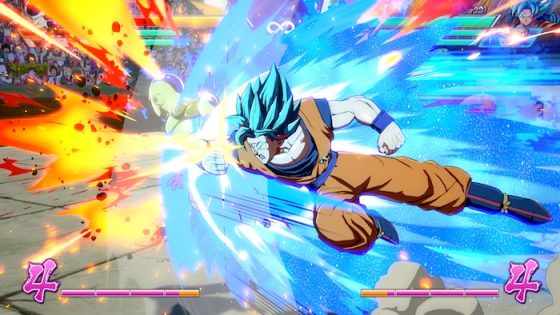
Players can also switch to a different character by holding the corresponding character’s assist button or pressing forward and the respective assist button. During this time, all assists will be locked out, indicated by an X over their portrait. During supers, players can also call for additional characters to do super attacks by hitting the corresponding assist button and a level-3 if you press the button while holding back.
All of these mechanics can be daunting for a first-time player, especially one unaware of fighting games, but luckily some design decisions help ease the learning curve. First, there are auto-combos, combos that can be initiated by simply pressing the Light button multiple times or Medium button multiple times. Second, Super Dash (done by pressing the Ki Attack and Heavy together) ignores light projectile attacks, helping players get in against opponents and also hit them if they make contact. Lastly, motions in this game aren’t complicated. The most difficult motions are qcf/qcb (quarter circle forward/back), allowing for players to approach this fighting game rather easily.
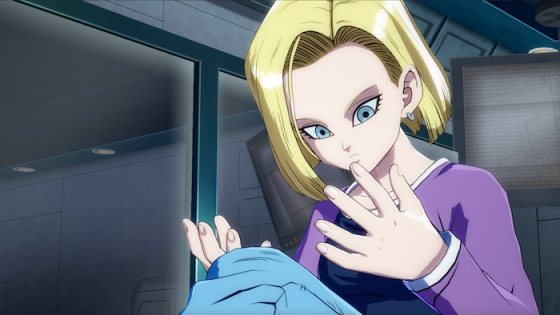
FighterZ’s story makes the player an integral part of the events. In a world engulfed by power-neutralizing waves, your soul bonds with iconic characters and returns a fighter’s lost abilities. To stop the mastermind of the clone army and the world’s destruction, characters from all parts of the Dragon Ball lore will appear, each having their own importance now that the field has been equalized.

Story Mode combines both fighting and role-playing game mechanics. At the beginning of each chapter, players will be introduced into story sequences, then a map of several destinations. Each map comes with an allotted amount of turns and various types of battles. To incentivize players, a combination of experience, new skills, Zeni (in-game currency), and characters can be gained by participating in one of the following:
- Battle (Normal): These battles are the most common. These usually act as obstacles for the players, however, the majority of experience and new skills equipment will be gained from these battles, making them a consideration if players want to prolong their stay on a map.
- Battle Tutorial: These battles exist in story mode to either give players unfamiliar with the system to learn the ropes or simply use the battles to gain experience and Zeni.
- Rescue Event: These battles will allow you to rescue and recruit a team member from the Dragonball universe, allowing you to approach battles with different team compositions or opening different interactions between characters as events play out.
- Buu Battle: These types of battles will pit the player against a clone version of Kid Buu. Majin battles are an uncommon occurrence, and usually appear after several turns have elapsed. When a Majin Battle appears, Kid Buu will absorb a non-boss location, and become a more challenging foe. Victory in this battle grants a large experience gain, making it a rewarding challenge seeking to level up characters.
- Boss Battle: On each map, there will be a boss battle, indicated by a purple icon. Defeating the boss before your turns are depleted lets you continue to the next chapter. Losing in this battle, however, will force players to begin the map anew.
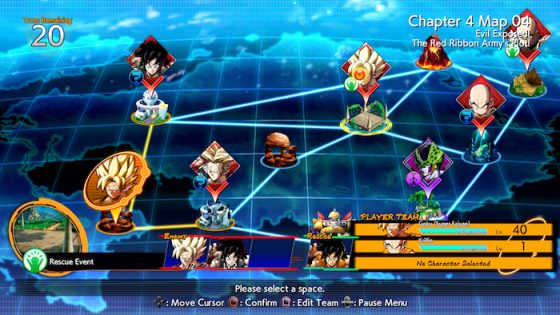
While the story itself isn’t that impressive, the way it was handled allows for fans to feel represented. Characters who wouldn’t be able to see each other, fight on the same level, or contribute to the situation are given a legitimate chance.
Small nods to fans also make their appearance, and while I caution anyone who’s entering Story Mode expecting groundbreaking literature, I would wholeheartedly encourage players to mix and match teams to see dream scenarios and interactions. Arc System Works really catered to people who love Dragon Ball characters, and it’s definitely recognizable.
- Story: The aforementioned Story Mode is a place where players can witness the events of DRAGON BALL FighterZ.
- Practice: Here, players can hone their skills by either engaging in a training mode with a variety of options to test combos and scenarios, learn game mechanics in the Battle Tutorial, or being a Combo Challenge (a set of combos that players can use to familiarize themselves with characters). While the training mode is satisfactory, Battle Tutorial and Combo Challenge are very bare, neither of which go too deeply into more subtle mechanics of the game.
- Arcade: This mode lets you fight against a sequence of enemy teams. There are three options to vary gameplay: the Snake Way Course, the Extreme Gravity Spaceship Course, and the Hyperbolic Time Chamber Course. Each course features a different composition of enemy teams and amount of stages (3, 5, and 7 respectively). Upon picking a course, there are several routes one can take: lower, middle, or higher. Defeating an opponent with a high score will elevate the player to a higher route while weaker performances will put them on the middle or lower routes.
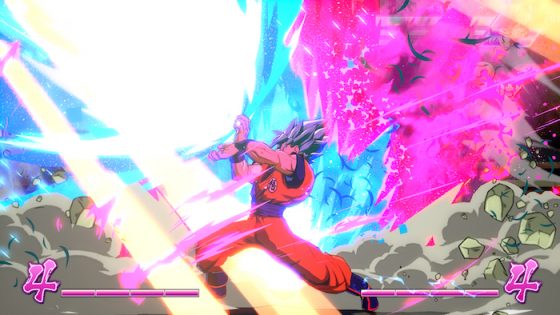
- Local Battle: The bread and butter of fighting games. Here you can begin battles against a CPU or human opponent. There is also a tournament option where you can set up your own single-elimination tournament amongst friends. While this last option certainly won’t be used in official tournaments, it does help include multiple people in group settings.
- Replay: A pretty self-explanatory name. This mode lets you view saved replays and also view the Replay Channel, an online network that compiles player matches for you to watch and learn what other players are doing.
- Shop: The shop is where you can purchase DLC or purchase Z Capsules with in-game currency or Premium Z Coins (a currency you get when you get a duplicate item). Z Capsules are a gacha-styled system. You can either purchase 1 or 10 at a time, and a random assortment of items unlock new color choices, lobby characters, stamps (emotes), player cards, and titles.
- Information: Not exactly a mode, but still worth mentioning. Official information will be presented here from the company if you’re online. This way players can stay updated on future events and possibly even tournaments.
- Online: Lastly, an online mode will be included, but at the current time of the review, that was not available to review. We do know, however, that multiple online options will be available, including Ranking, Player Matches, and a Lobby system.
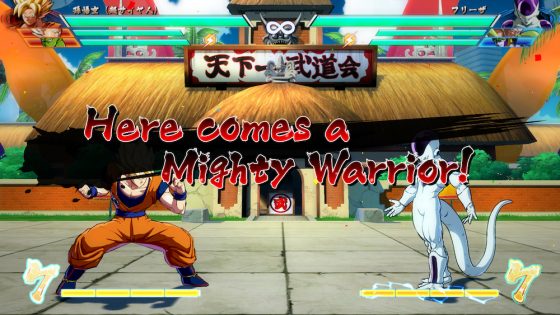


No comments:
Post a Comment